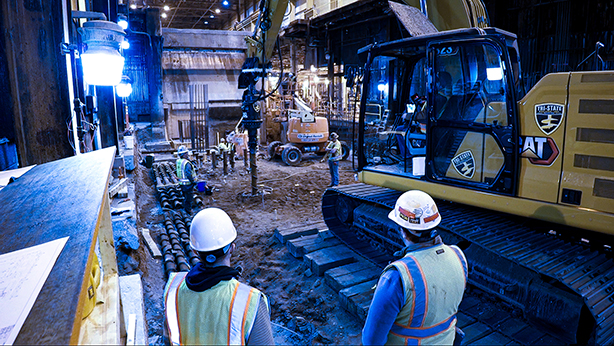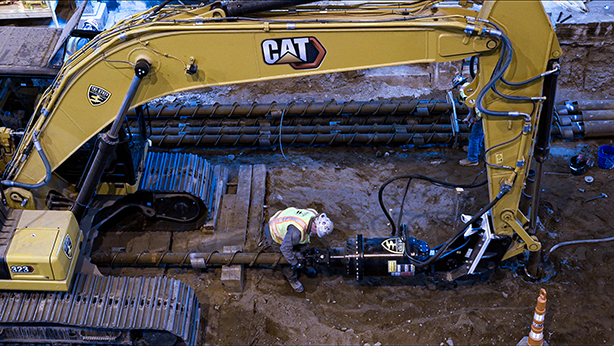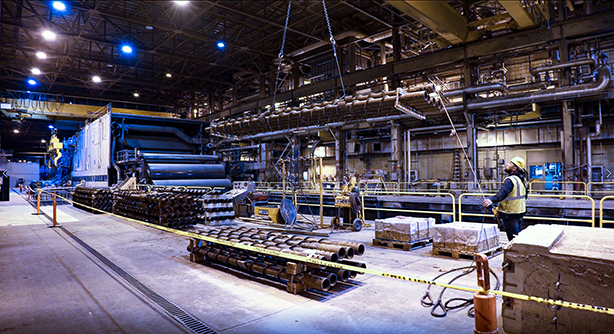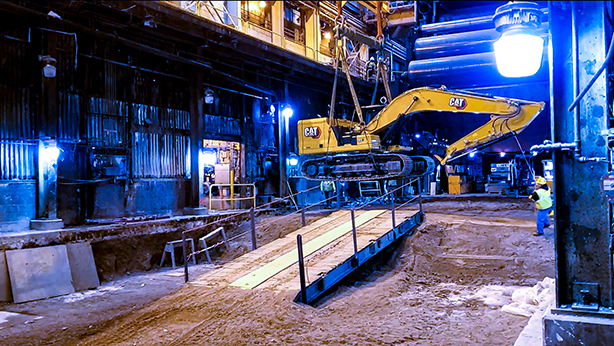OVERVIEW:
ST Paper & Tissue acquired its Duluth, MN location in early 2021 and began a $54 million overhaul of the facilities shortly after. Scheduled to open in the fall of 2022, the upgraded paper and tissue mill will allow for increased automation and further diversification of their paper product offerings. The installation of a new tissue paper machine will be one of the most notable upgrades to the facility. Adding a new mill will allow the plant to double its production capacity and provide more local jobs. The new paper mill will be installed inside the existing factory, and a new foundation will be necessary to support it.
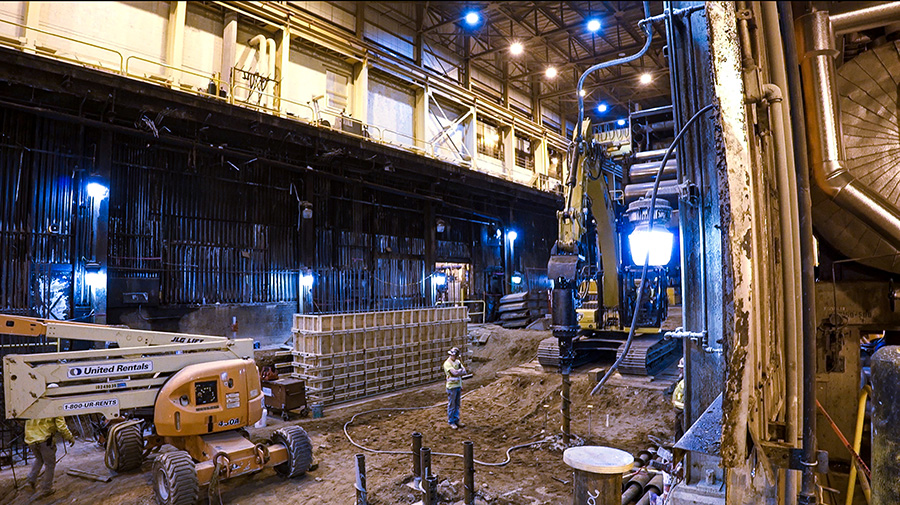
CHALLENGE:
It was determined that the new paper-making machine would need a deep foundation due to the poor soils at this location. The installation of a deep foundation presented multiple challenges. The most significant challenge was that a clear path to the install area did not exist. Therefore, all the necessary equipment and materials had to be lifted over the existing machinery using a crane and lowered into the installation area. Furthermore, a 9-12 inch concrete slab existed across the entire site, and an opening had to be cored through the slab at every pile location. Another complication of working inside of an existing factory is spoils and mess. Due to limited access and open space within the building, there was no room to manage spoils, and removing them would be difficult. Wherever possible, mess needed to be eliminated or reduced. Containing installation mess and performing excessive site cleanup would increase costs and complications.
In the early stages of this project, driven piles and traditional micropiles were the recommended piling methods. Traditional micropiles were considered for this project as they could perform well in the challenging soil conditions. However, the excess water and mess in the enclosed space would have added complications and costs to the installation. Driven piles then seemed to be the most economical solution as the material costs were relatively low. However, given the logistics of the project, the disadvantages soon became apparent. The soils encountered during installation would have proven difficult or nearly impossible to advance a driven pile without predrilling through the top 30′ of material. The installation equipment required would also be more challenging to mobilize within the site’s confines, and there were concerns about how the vibrations would affect the existing structure. The complications associated with each pile type increased the total cost of the foundation package to a point where they were no longer competitive.
SOLUTION:
Tri-State Drilling, the installer on this project, brought this to the IDEAL Design Team as they felt STELCOR DDMs would work well with the site restrictions. The IDEAL Design Team ran a preliminary design analysis for the project and found STELCOR to be an excellent fit for the soils at the site. The IDEAL Design Team then developed a soil displacement head specific to this project’s soil profile. The design team specified a displacement head configuration, ensuring the pile would be well suited to challenging soils. The custom configuration included a stinger tip and the patented BarrelForm displacement structure.
STELCOR was presented as an alternate and was successfully load tested to 200 tons compression and 75 tons tensions. STELCOR DDMs were accepted, and Tri-State Drilling successfully installed 131 STELCOR DDMs within the limited install area with no vibrations. The compression piles were installed to 100,’ and the tension piles resisted the required load at 29′. The STELCOR system requires minimal installation equipment and utilizes an excavator for installation. Therefore, a dedicated piling rig would not have to be mobilized. STELCOR was also installed with no spoils and minimal mess as it displaces soils during installation and relies on mechanical grouting rather than pressure grouting. As a result, the resources required for site cleanup were reduced, and installation rates were increased, leading to significant cost and time savings.
INSTALLER:
Tri-State Drilling, LLC
DESIGN LOADS:
PILE TYPE #1:
80 Tons Compression Load
PILE TYPE #2:
30 Tons Compression Load
25 Tons Tension Load
TEST LOADS:
PILE TYPE #1:
200 Tons Compression Load
PILE TYPE #2:
75 Tons Tension Load
PILE DETAIL:
STELCOR 1400
BarrelForm Displacement
2x 12″ Stinger Plates
14” Corrugated Grout Column
11” Solid Grout Column
8” Reverse Grout Auger
5.5” O.D. X 0.361″ W.T. – 80 ksi central shaft
NUMBER OF PILES:
131
SOILS + EMBEDMENT DEPTH:
At this site, subsurface conditions generally consisted of concrete, fill, weathered rock, and fat clays. A 9-12 inch concrete layer from the current building foundation existed across the entire surface. Beyond the concrete, a layer of fill, made up of silty sands, was present up to 15 feet below the surface. Poorly graded brown sands that were generally fine and water-bearing extend around 38 feet in all borings. Fat clays were found below the layer of sand and went beyond 100 feet where the borings were terminated.
PILE LENGTH:
PILE TYPE #1: 100′-106′
PILE TYPE #2: 29′-36′
BOND LENGTH:
PILE TYPE #1: 90′-96′
PILE TYPE #2: 19′-26′

